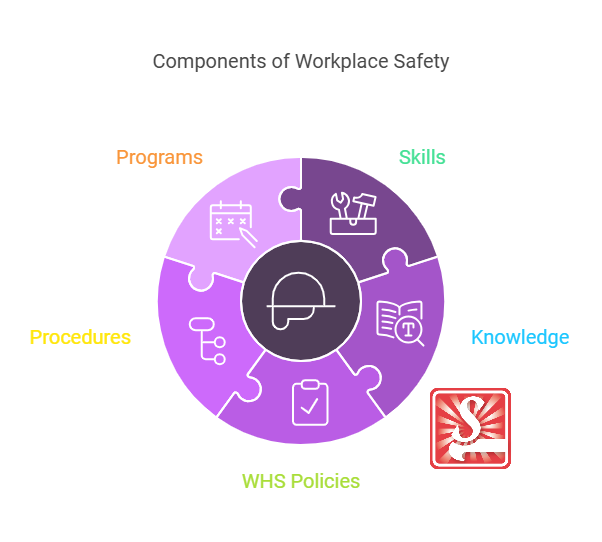WHS Competence Development When Assisting with Maintaining Workplace Safety
Posted by SkillMaker in Dec, 2024
What is a concise description of WHS competence development when assisting with maintaining workplace safety?

WHS competence development when assisting with maintaining workplace safety involves acquiring the necessary skills, knowledge, and behaviors to effectively contribute to the health and safety standards in a workplace. It emphasizes a comprehensive understanding of workplace hazards, risk management practices, and safety protocols to ensure a secure and healthy work environment.
Why do people in enterprises need WHS competence development when assisting with maintaining workplace safety?
Enterprises need WHS competence development to empower teams with the ability to identify, evaluate, and control workplace hazards, thereby minimizing risk and preventing accidents. Developing WHS competence ensures compliance with regulatory standards, reduces workplace injuries, enhances productivity, and fosters a culture of safety that benefits employees and organizational goals.
“WHS competence development ensures a proactive approach to safety, minimizing risks and fostering a secure working environment for all.”
What are the key components or elements of WHS competence development when assisting with maintaining workplace safety?
Key components of WHS competence development include:
- Risk Assessment Skills: Identifying hazards and assessing their potential impact.
- Emergency Response Planning: Preparing for and managing emergencies effectively.
- Communication and Teamwork: Fostering effective communication and collaboration regarding safety concerns.
- Regulatory Knowledge: Understanding workplace safety laws and standards.
- Continuous Improvement: Engaging in ongoing learning and adaptation to new safety challenges and technologies.
What key terms, with descriptions, relate to WHS competence development when assisting with maintaining workplace safety?

Registered Trademark®
- Hazard Identification: The process of finding and recognizing hazards.
- Compliance: Adherence to WHS legislative requirements and standards.
- Risk Control: Implementing measures to eliminate or reduce risks.
- Safety Culture: The attitude, beliefs, perceptions, and values that employees share concerning safety.
- Incident Investigation: Analyzing workplace incidents to prevent future occurrences.
Who is typically engaged with operating or implementing WHS competence development in the workplace?
WHS officers, safety advisors, human resource managers, and team leaders play critical roles in implementing WHS competence development. These professionals collaborate to deliver training, facilitate workshops, and ensure the workforce is adequately equipped to manage safety effectively.
How does WHS competence development align or integrate with other components of Workplace Safety?

WHS competence development is an integral part of workplace safety as it interconnects with risk management, compliance, incident response, and safety culture. By enhancing competence, organizations reinforce their safety strategies, ensuring a systematic approach to preventing accidents and responding to risks effectively.
Where can the student go to find out more information about WHS competence development in workplace safety?
What job roles would be knowledgeable about WHS competence development in workplace safety?
Roles include:
- WHS Advisors
- Safety Officers
- Compliance Managers
- Human Resource Managers
- Training Coordinators
What is WHS competence development like in relation to sports, family, or schools?

In relation to sports, WHS competence development is akin to an athlete continuously honing their skills to perform safely and effectively.
In a family context, it resembles teaching family members crucial life skills and safety measures.
In schools, it’s similar to fostering an educational environment where safety is a priority, and students are equipped with knowledge to contribute to a safe space.
(The first edition of this post was generated by AI to provide affordable education and insights to a learner-hungry world. The author will edit, endorse, and update it with additional rich learning content.)


 Post Tagged with
Post Tagged with